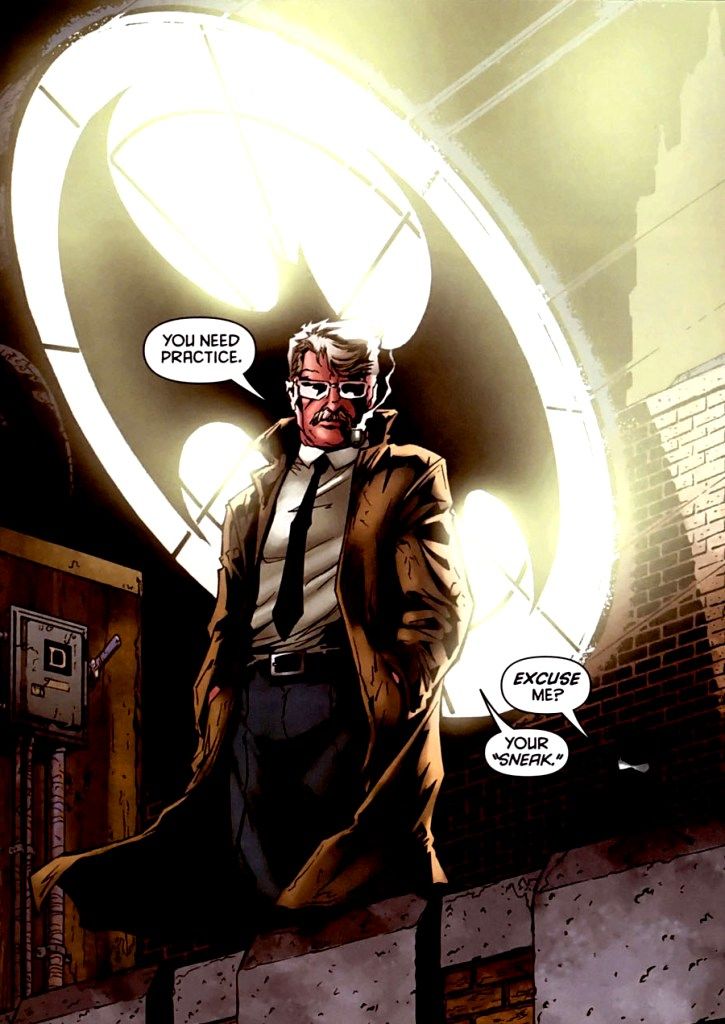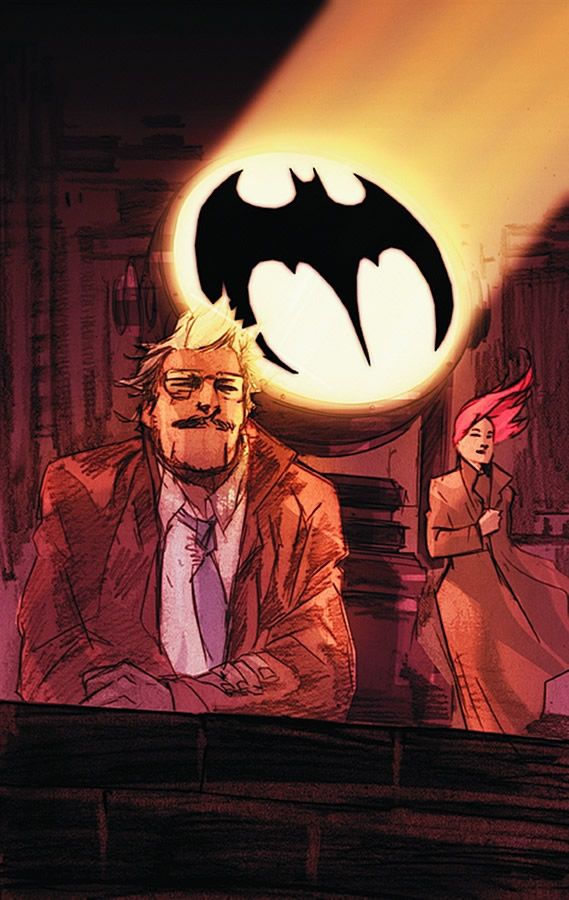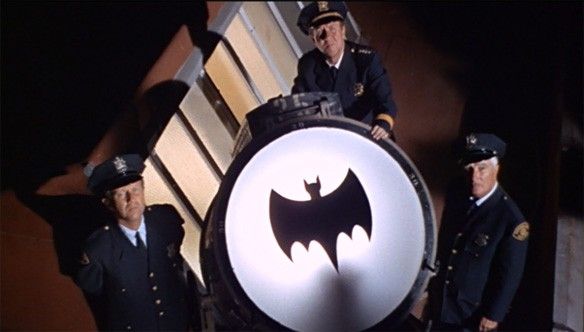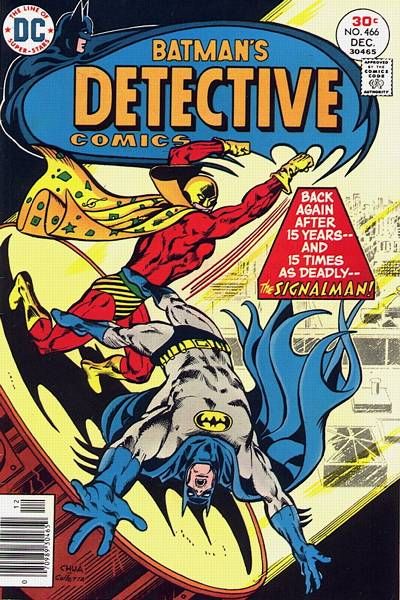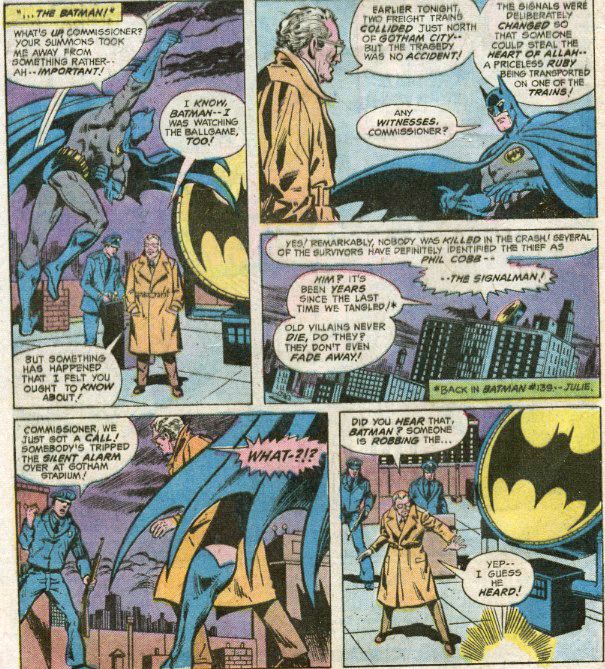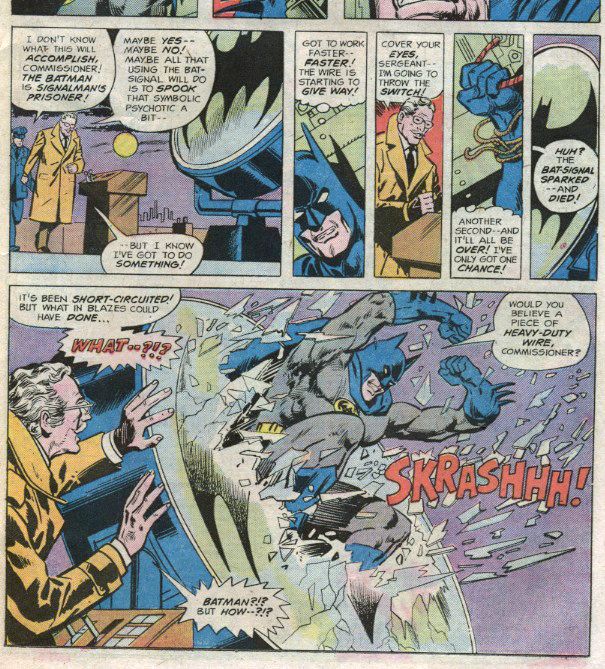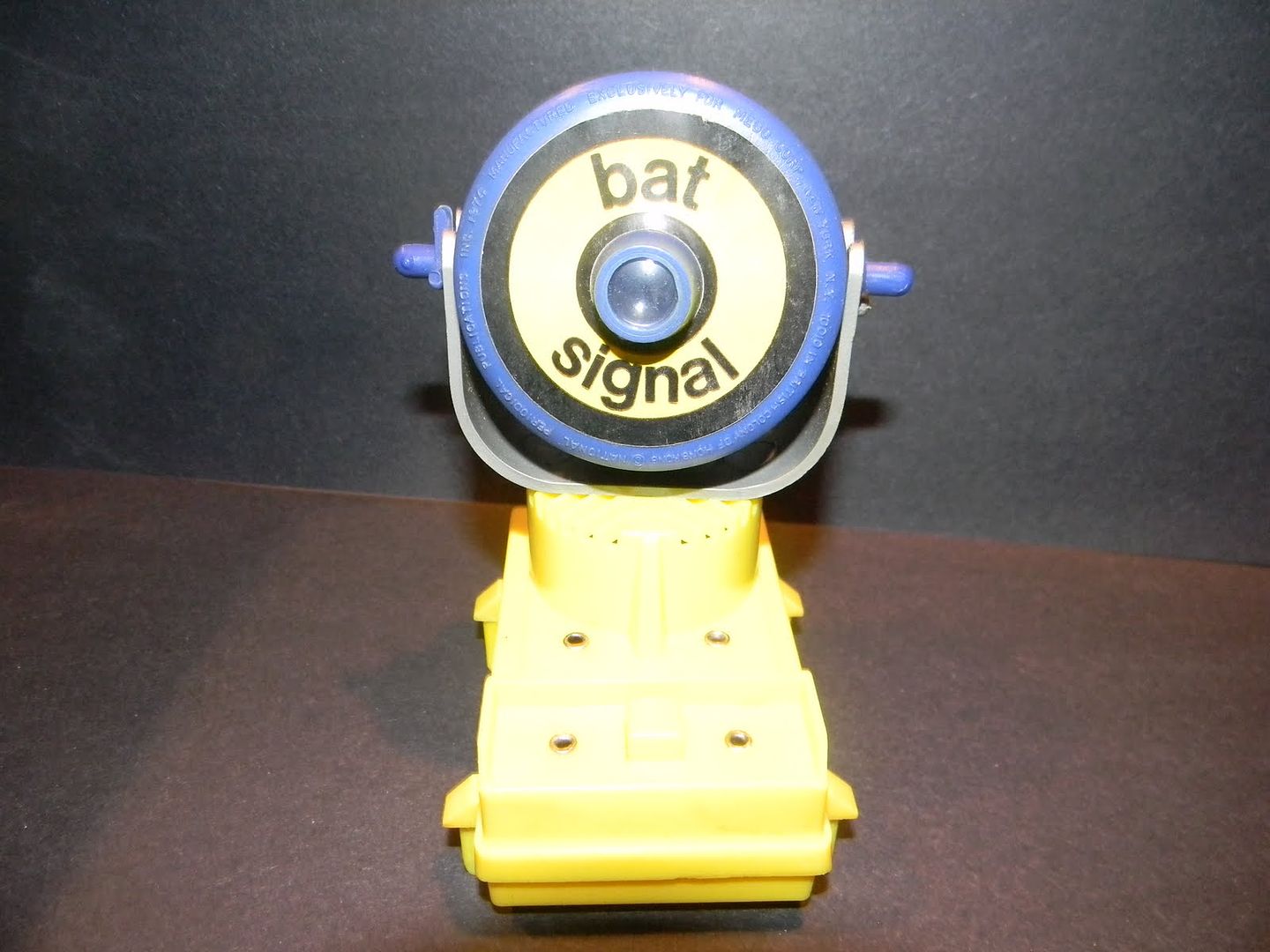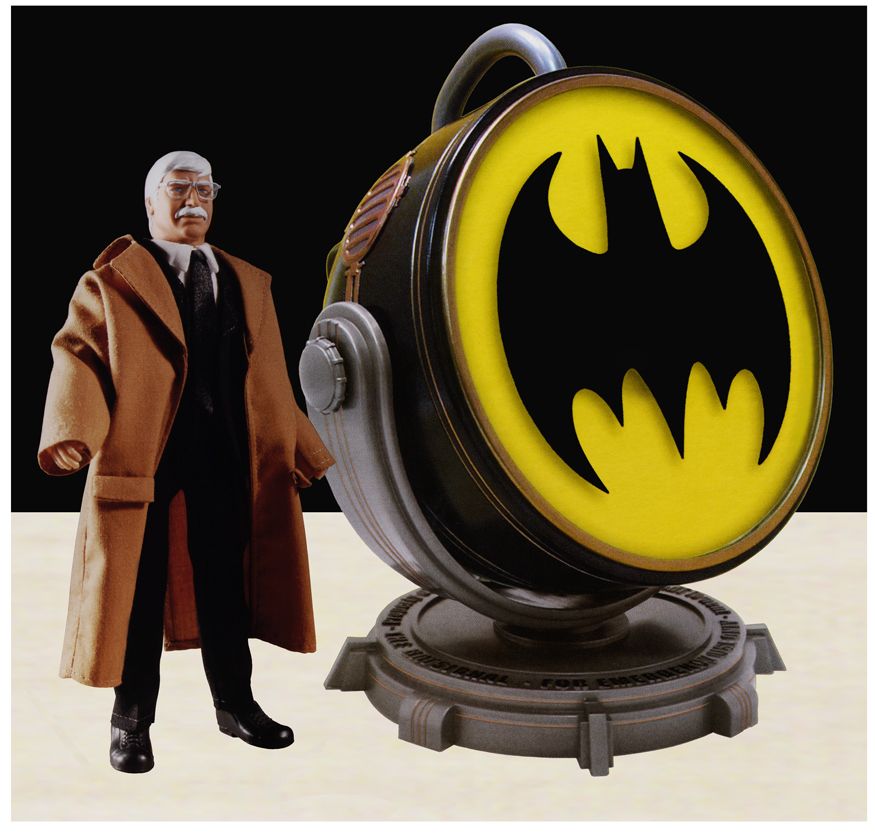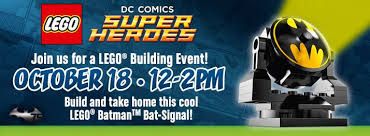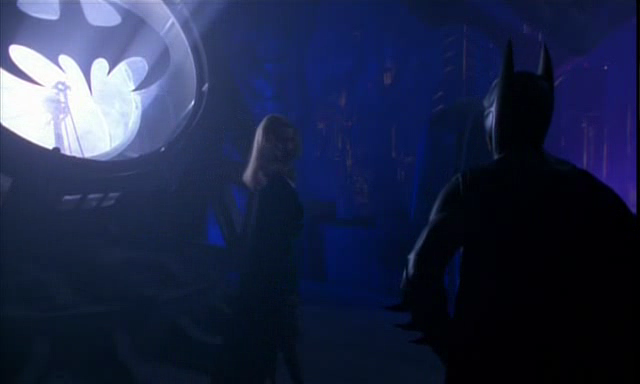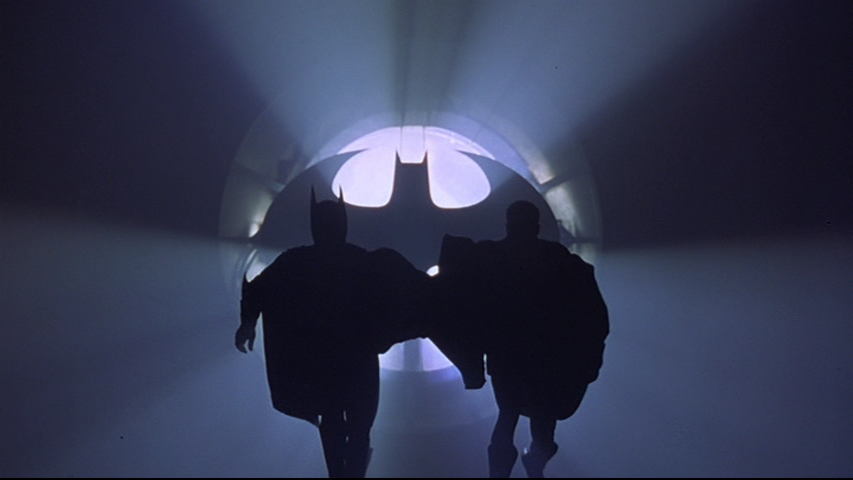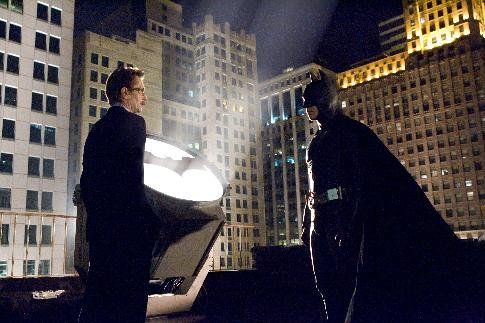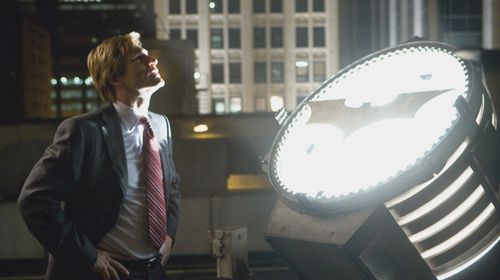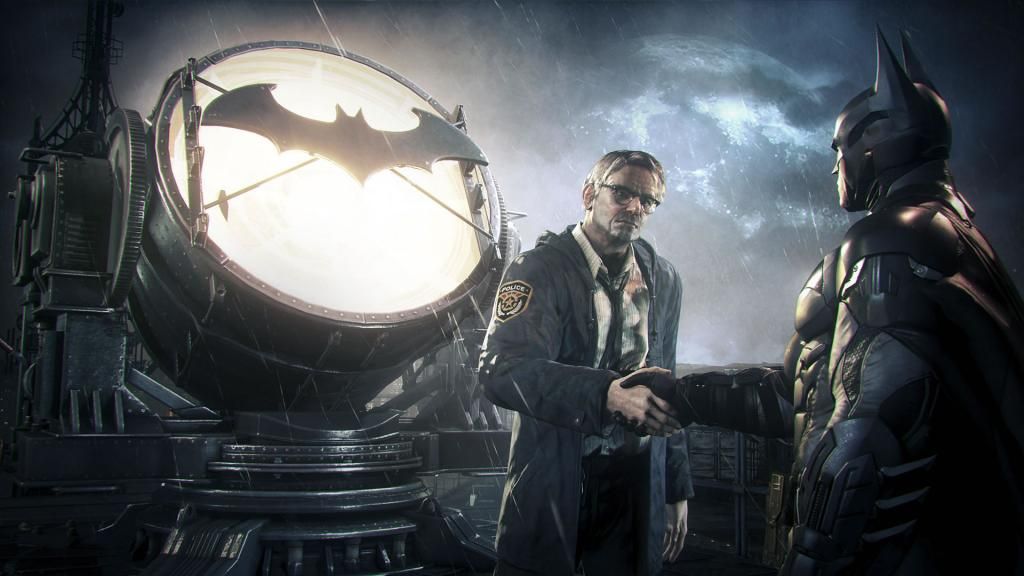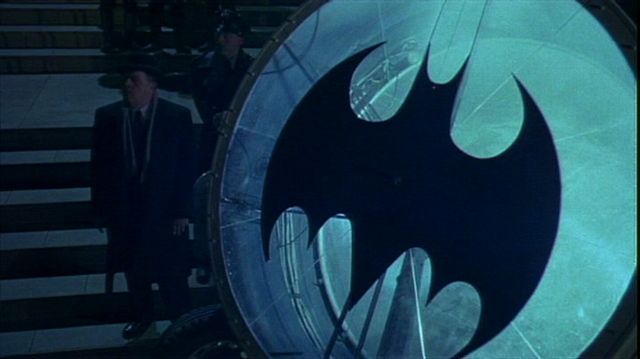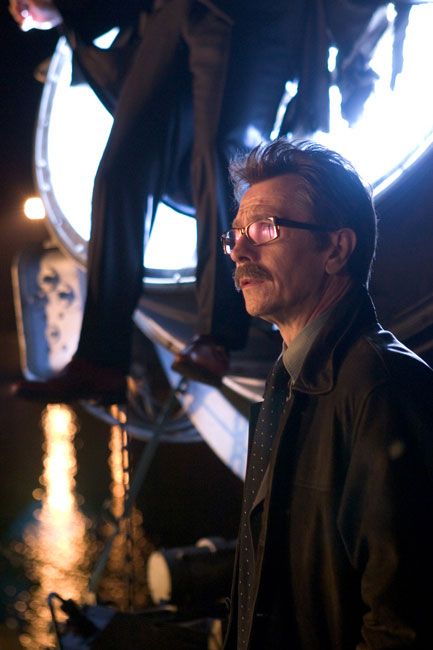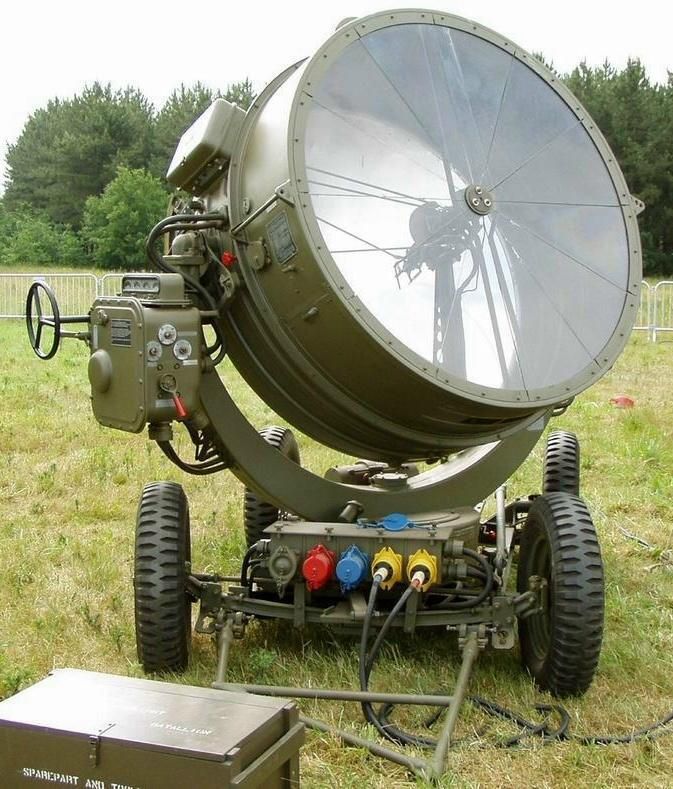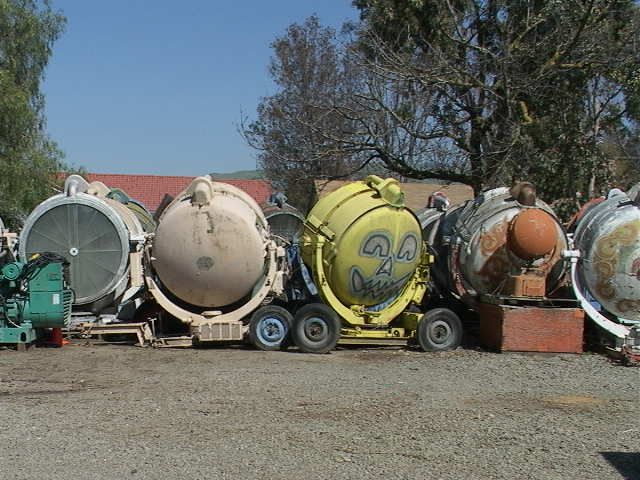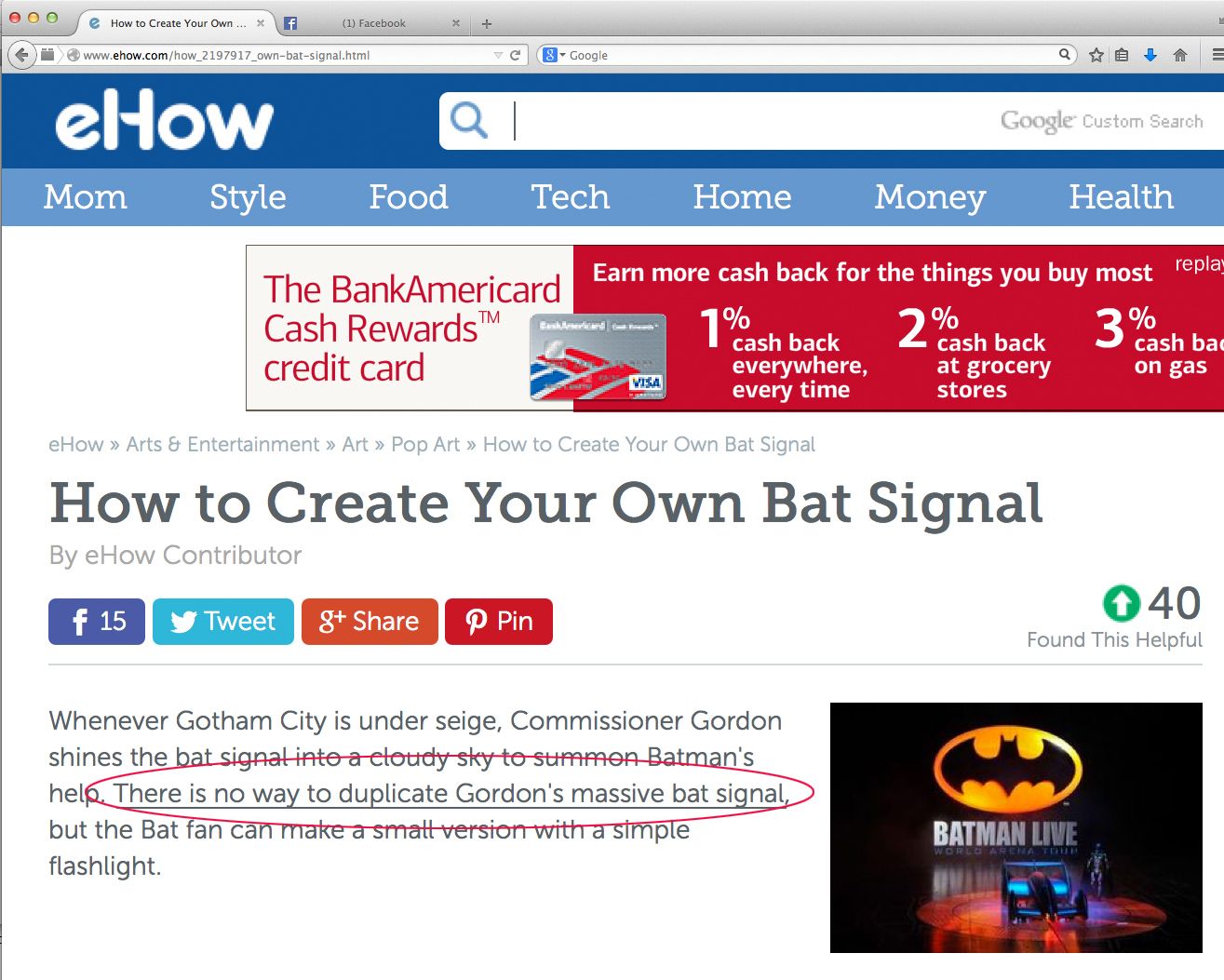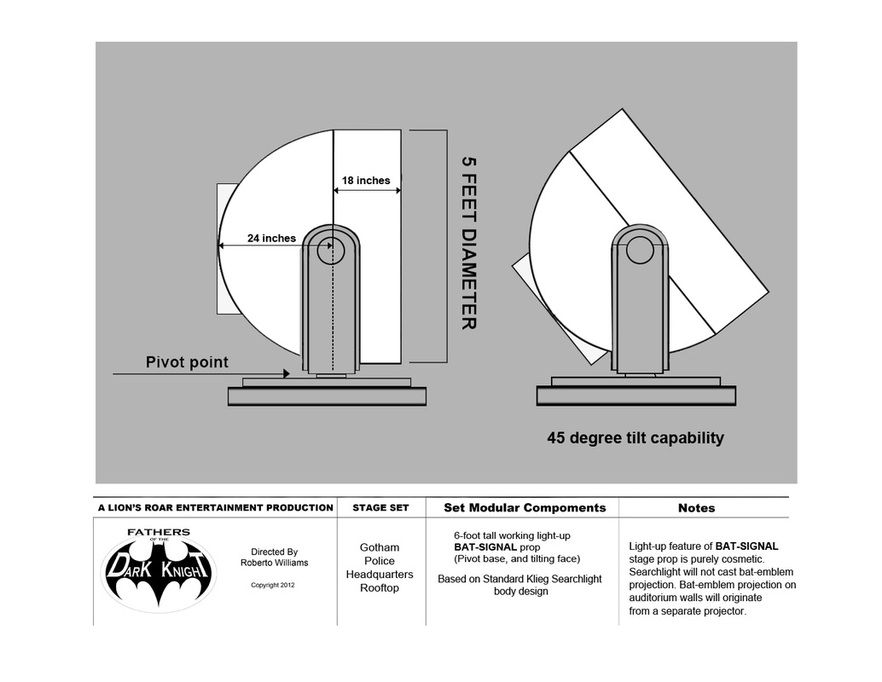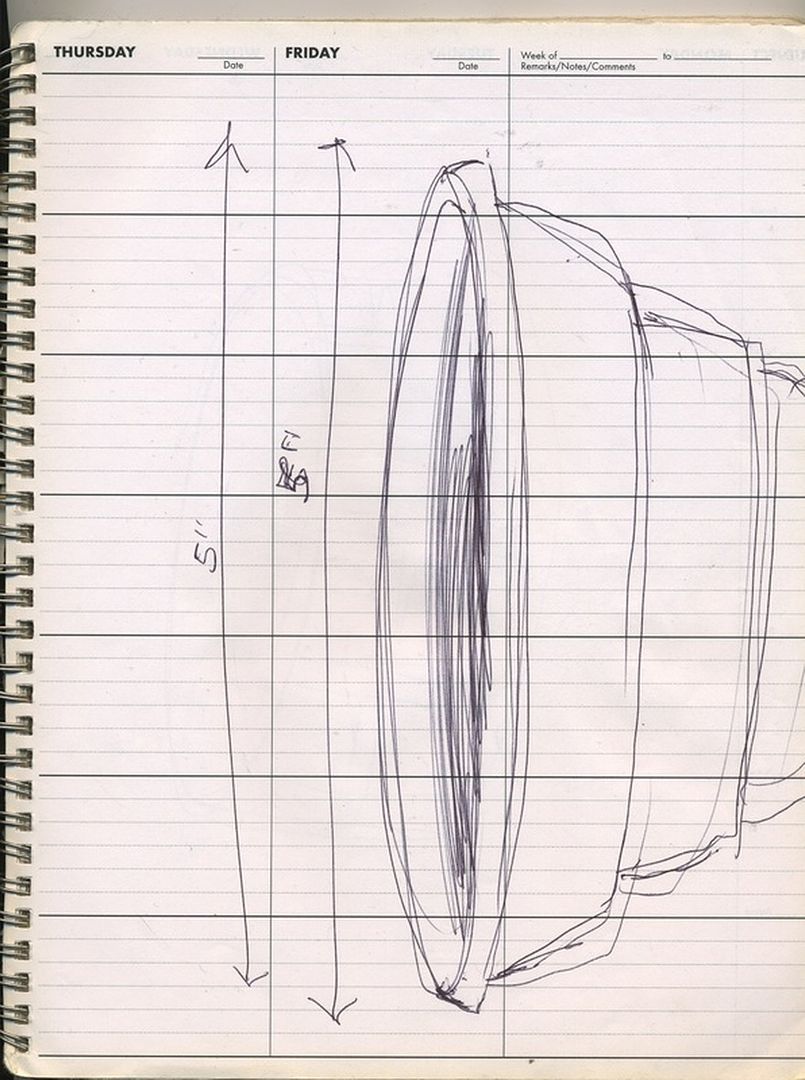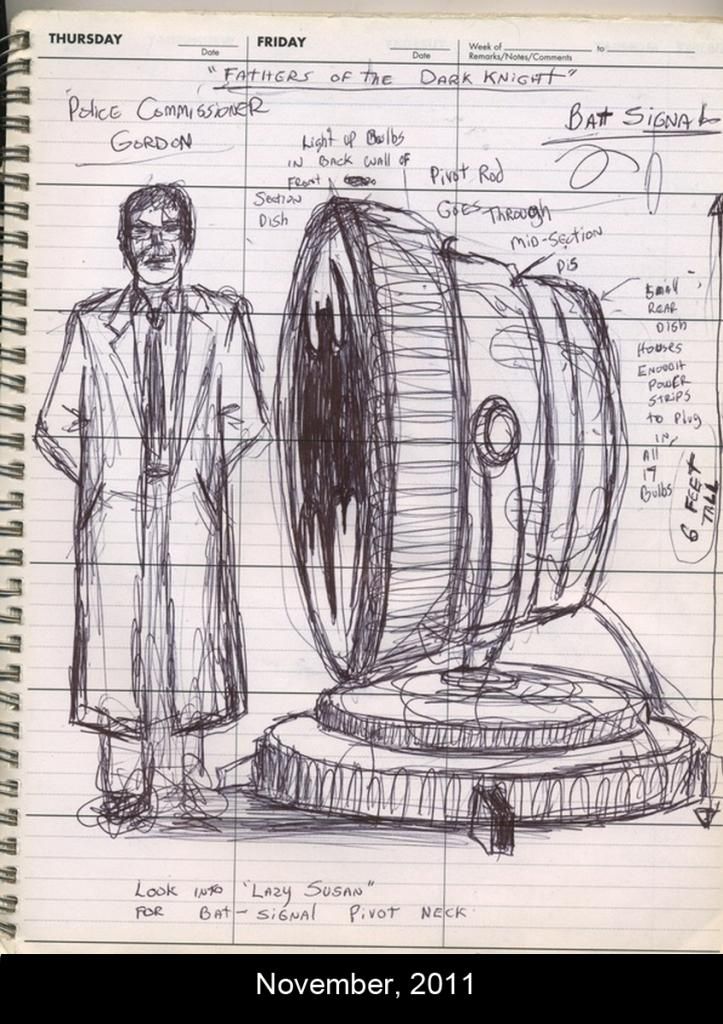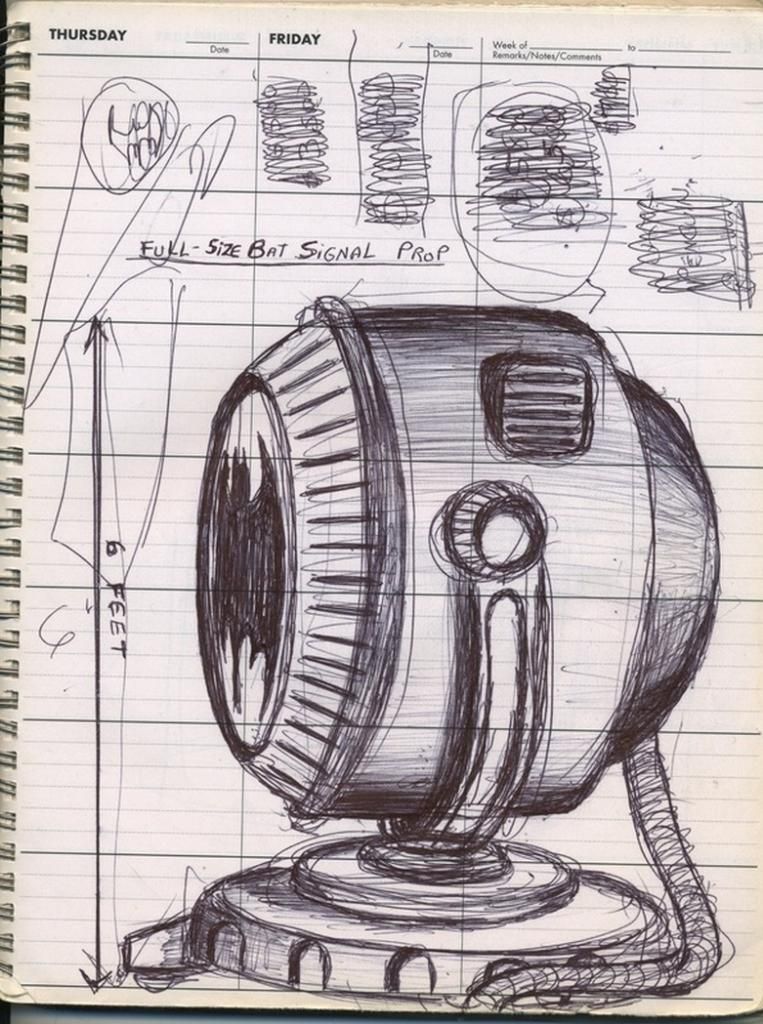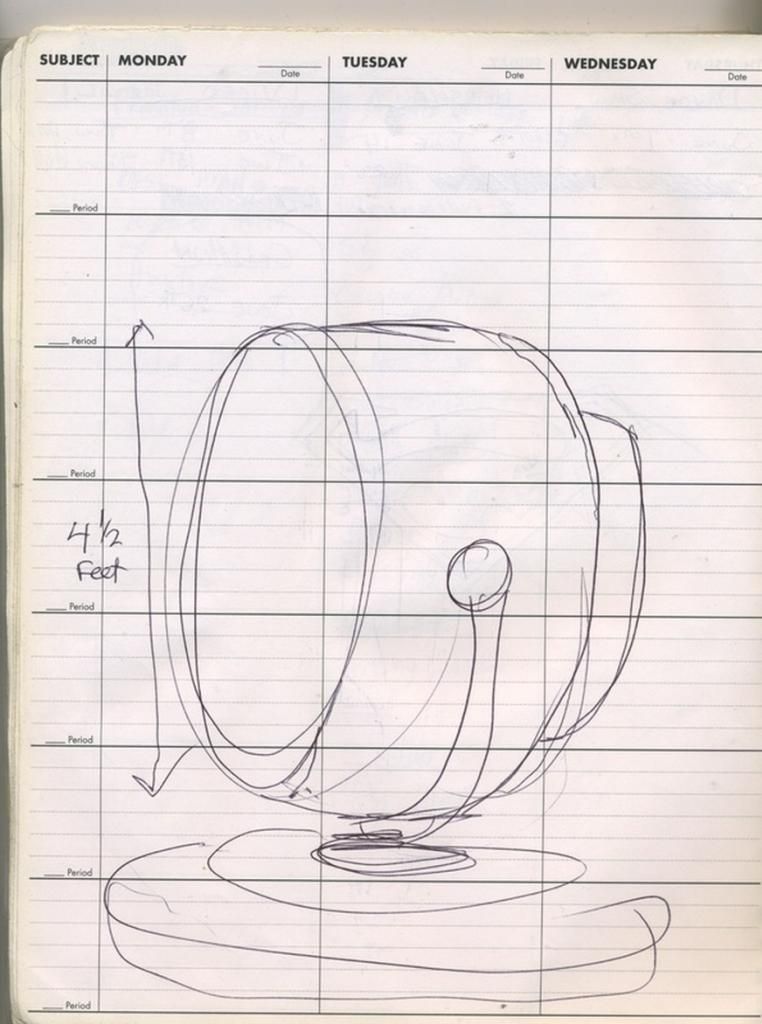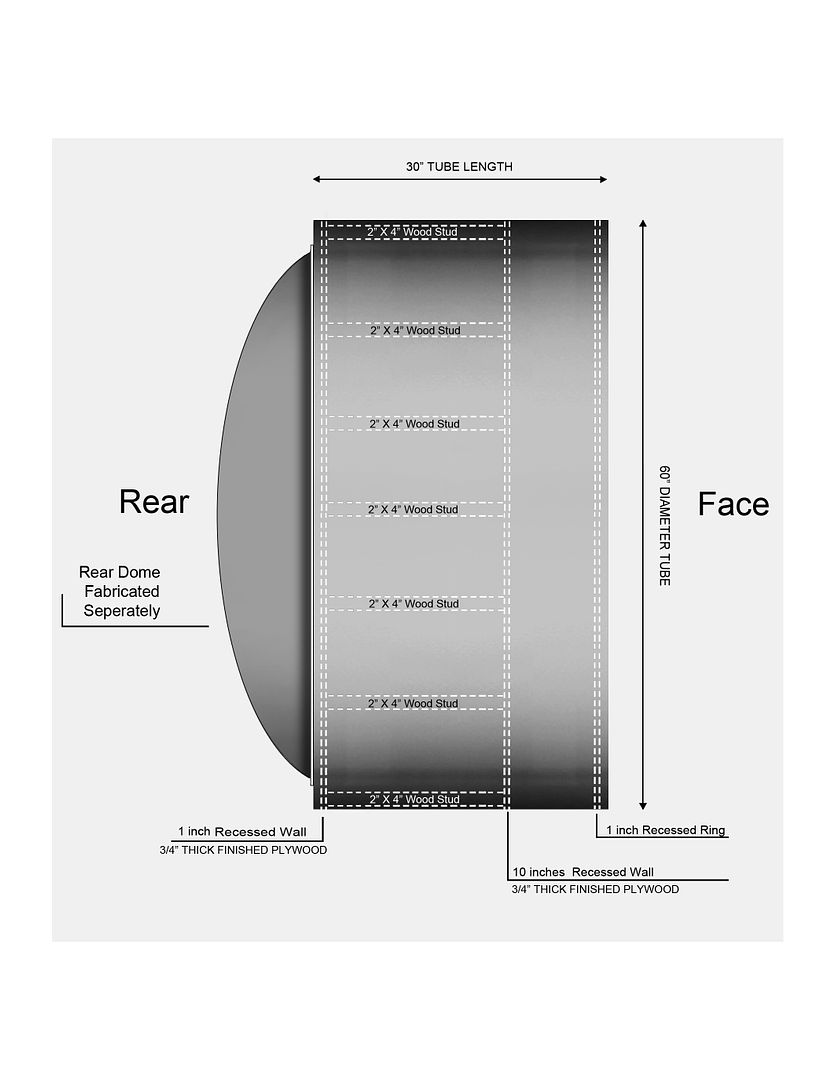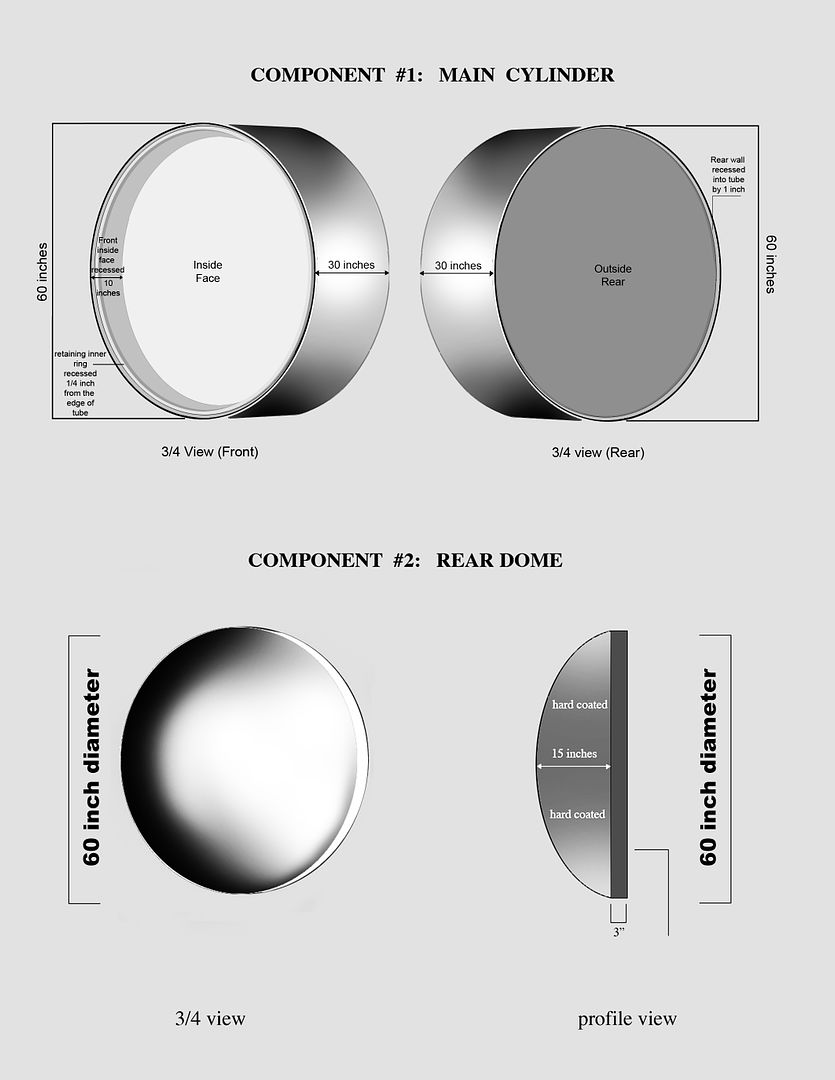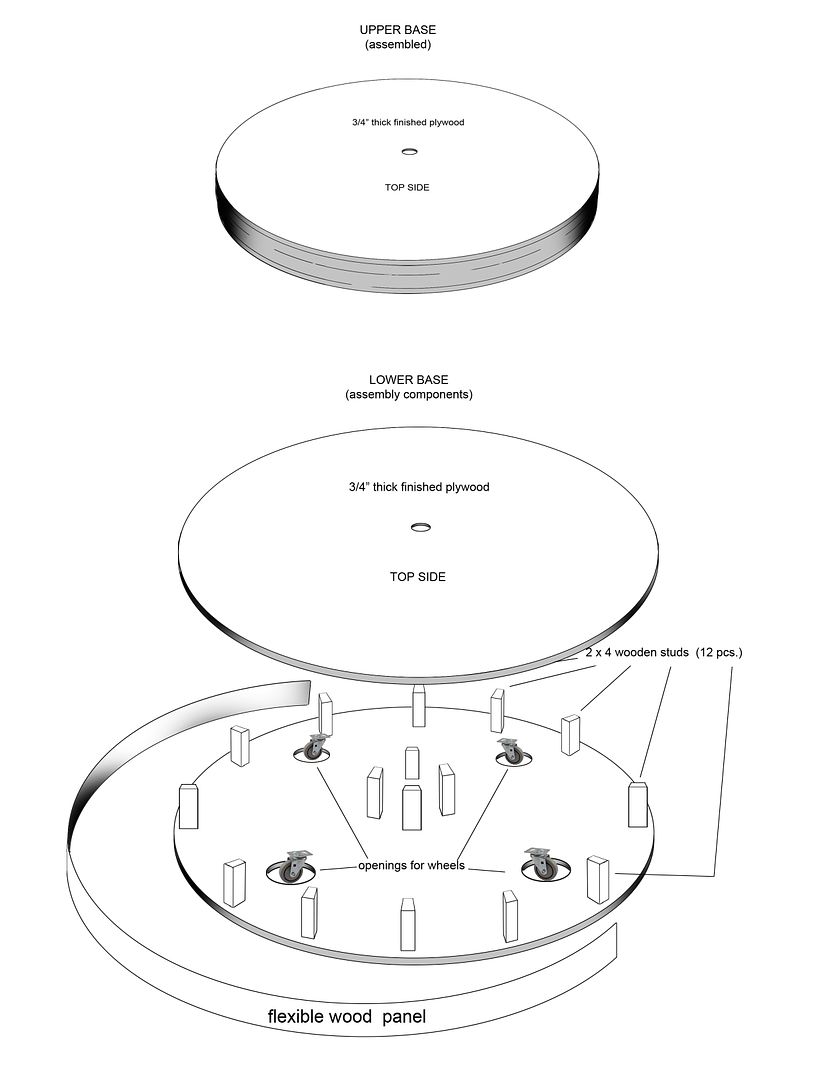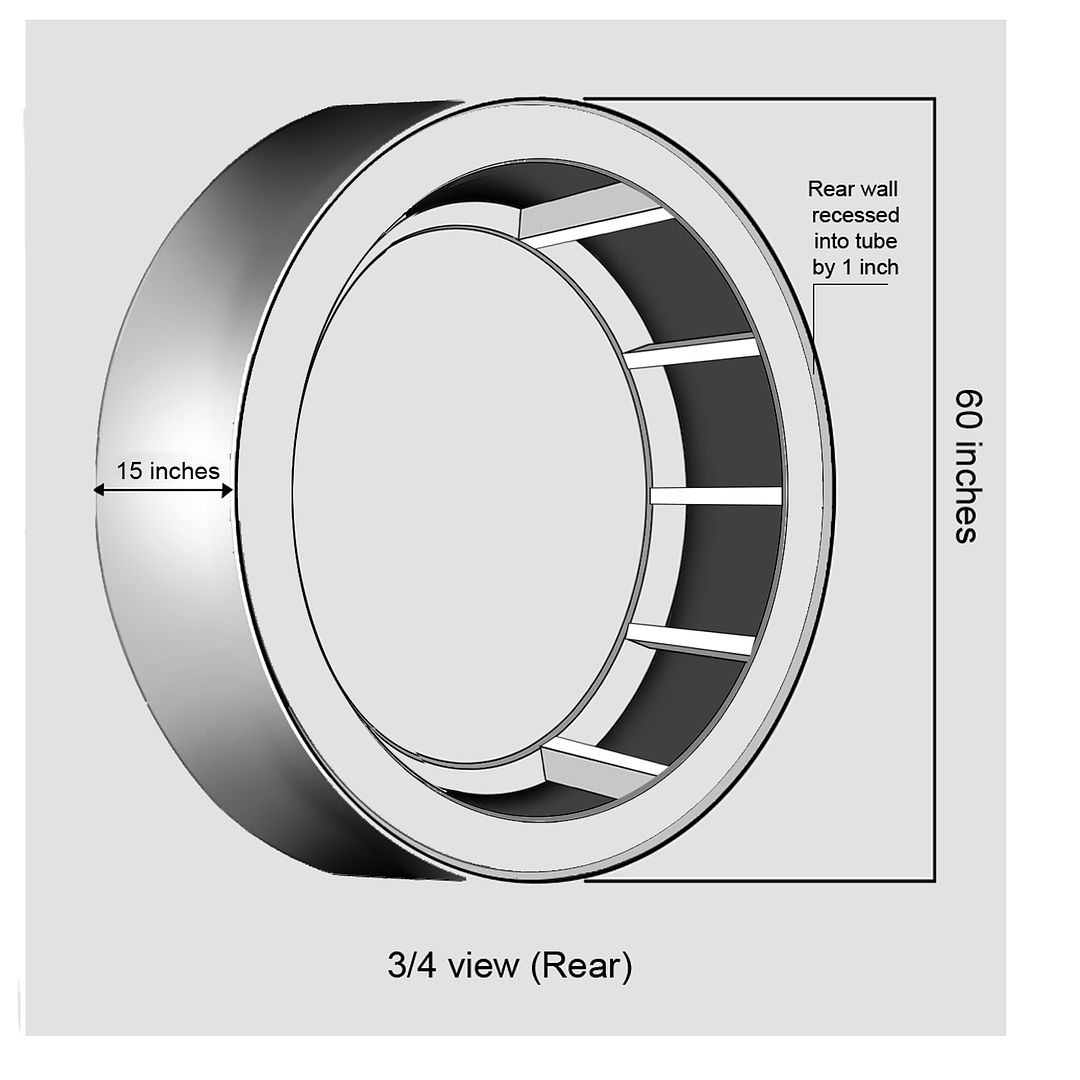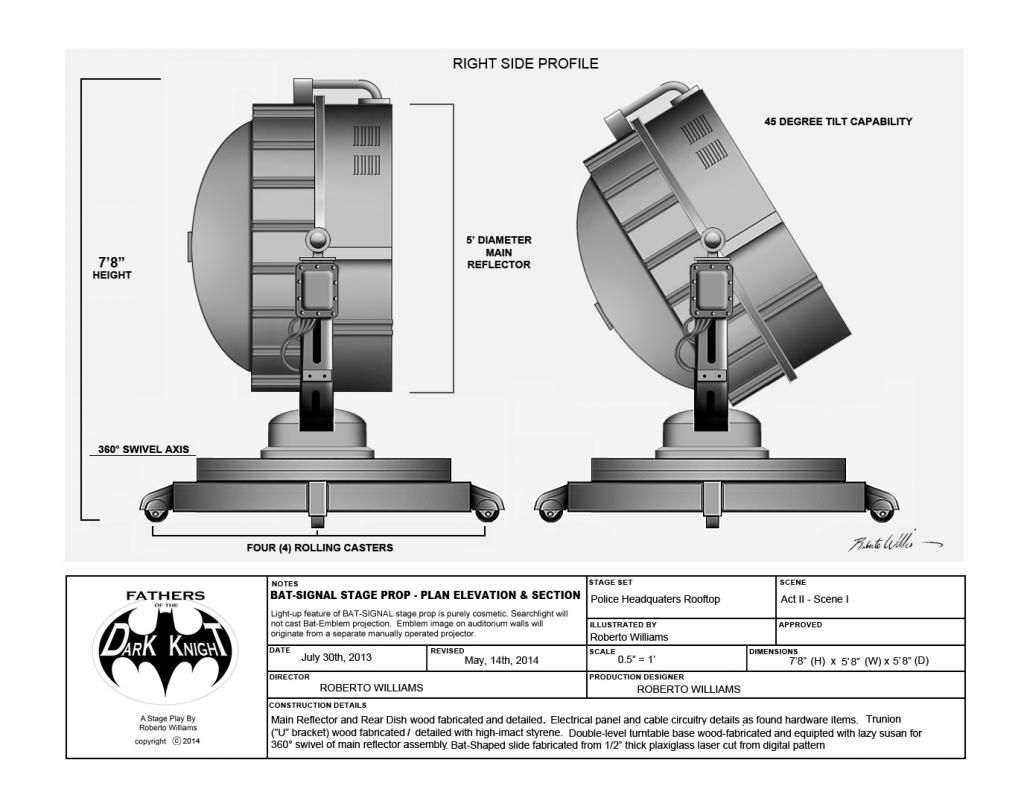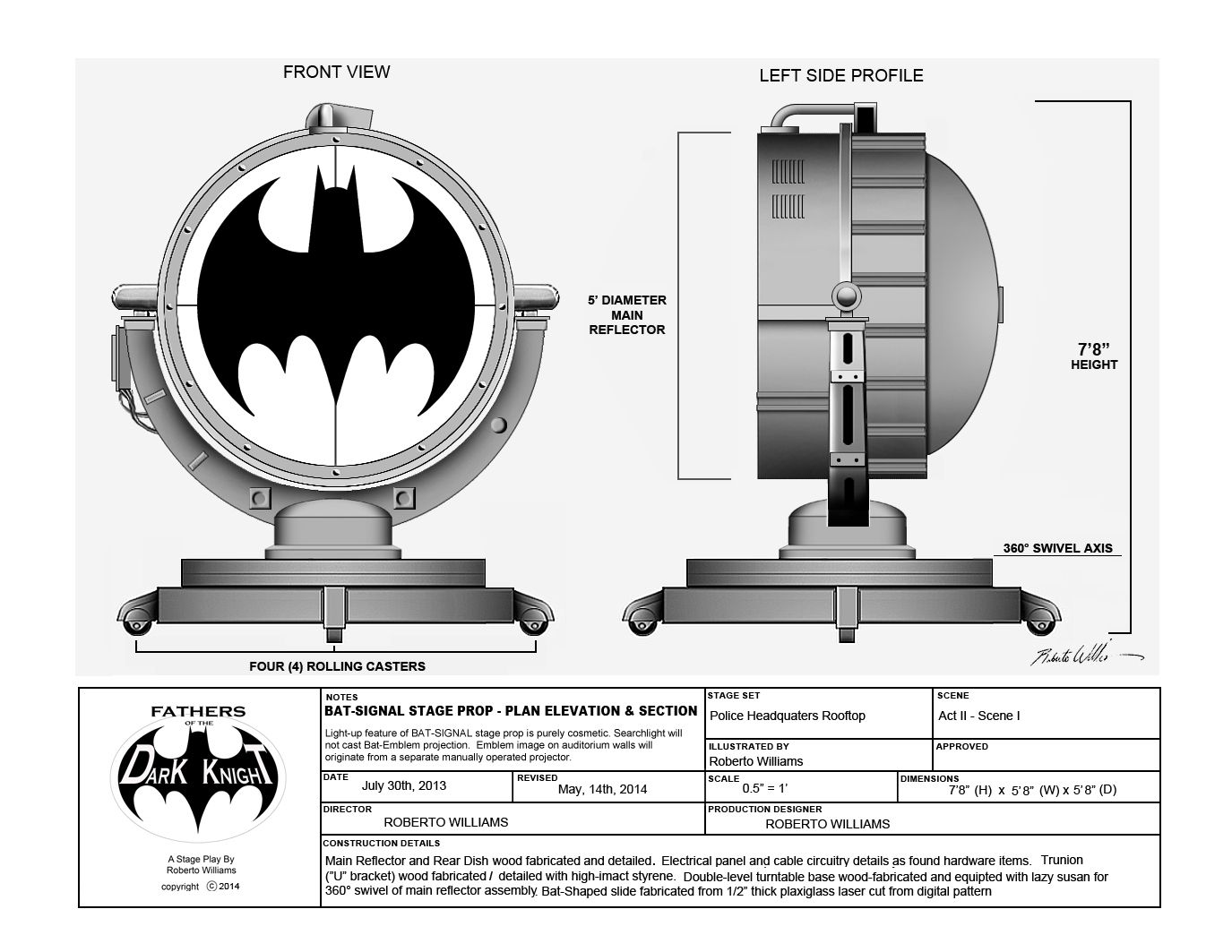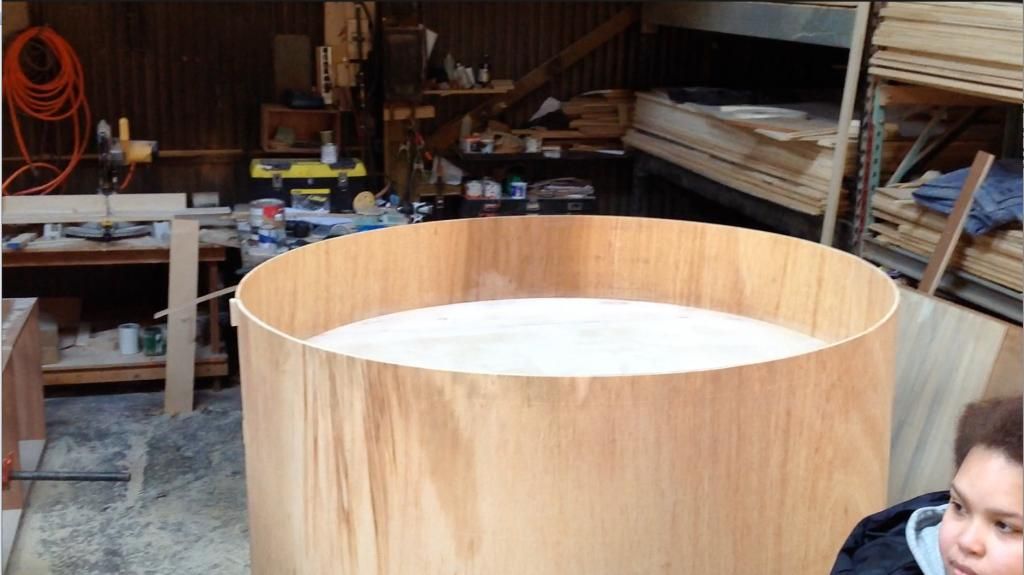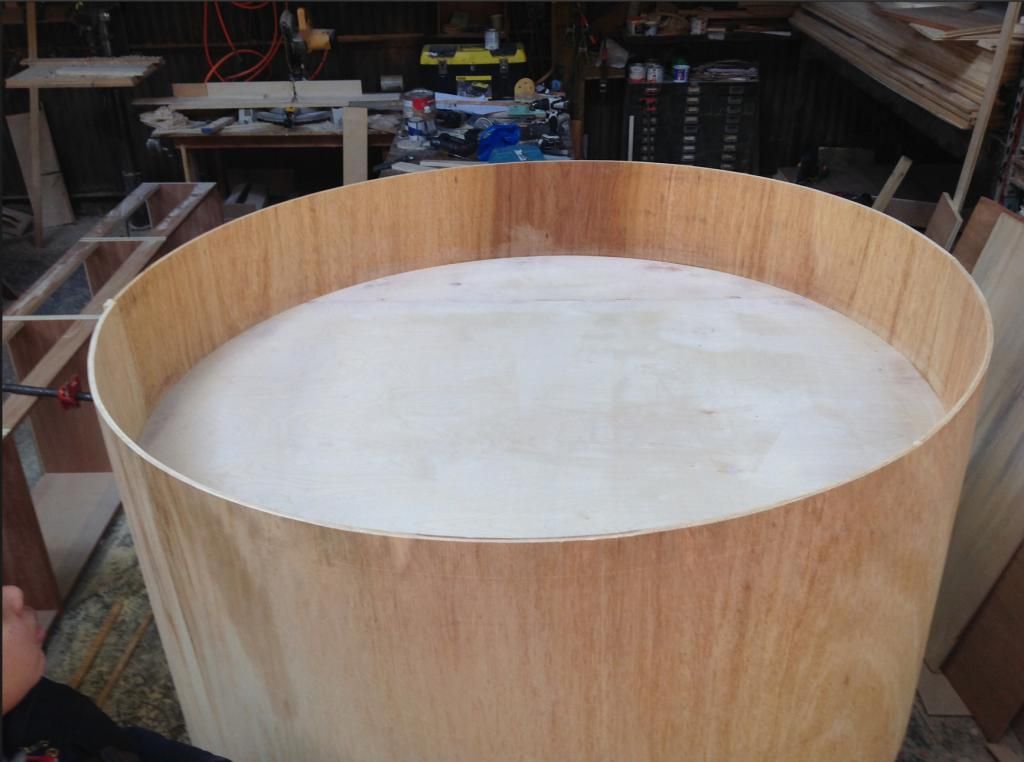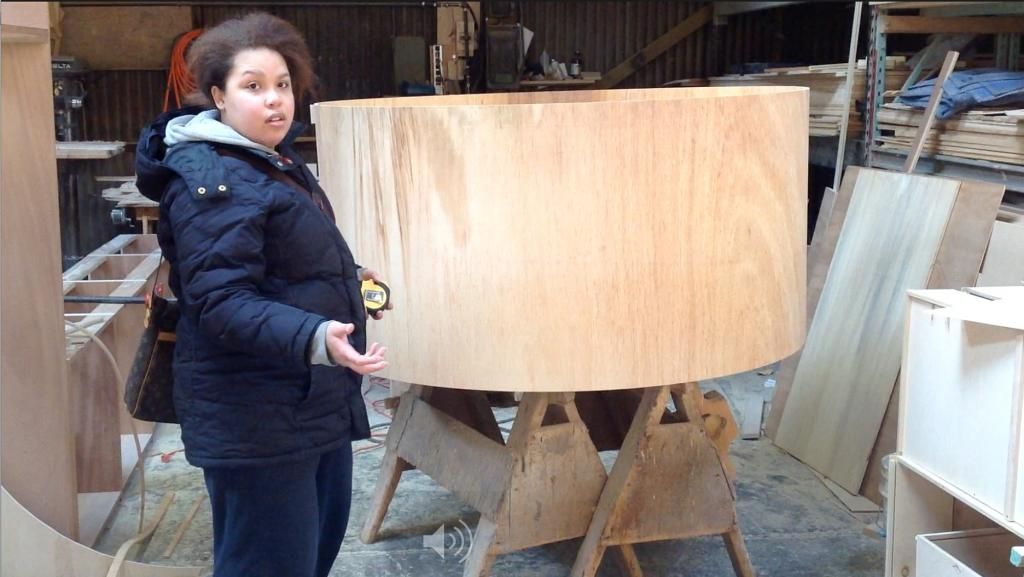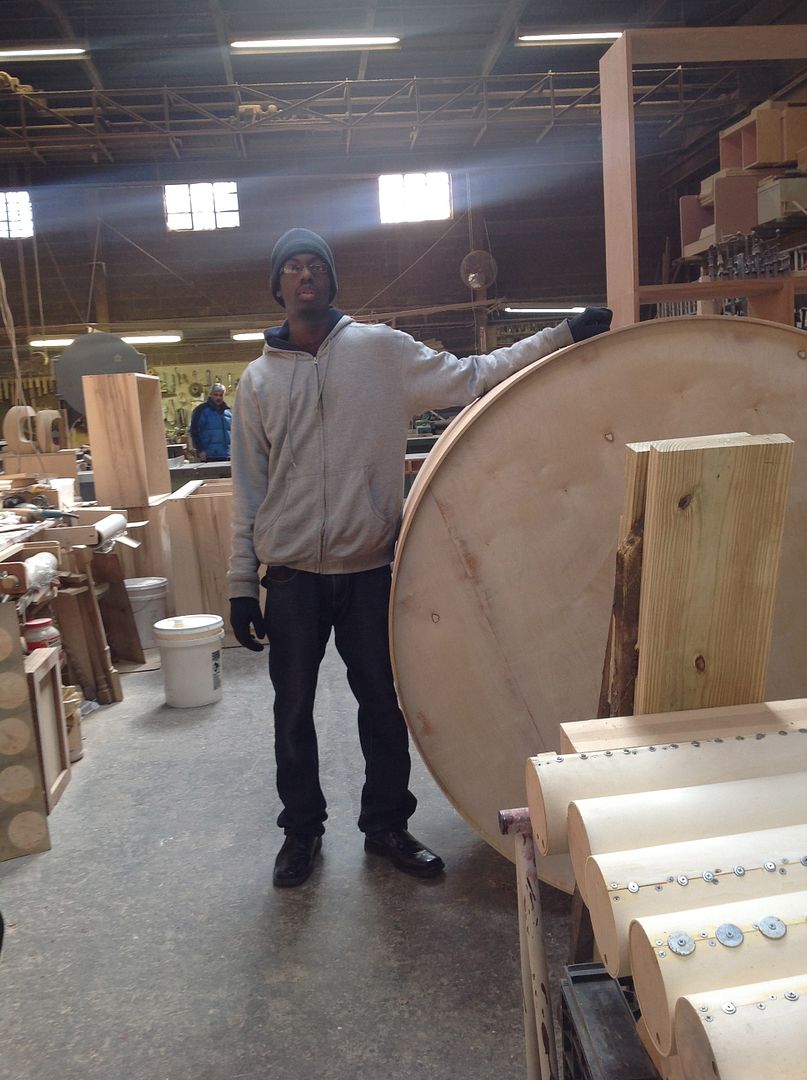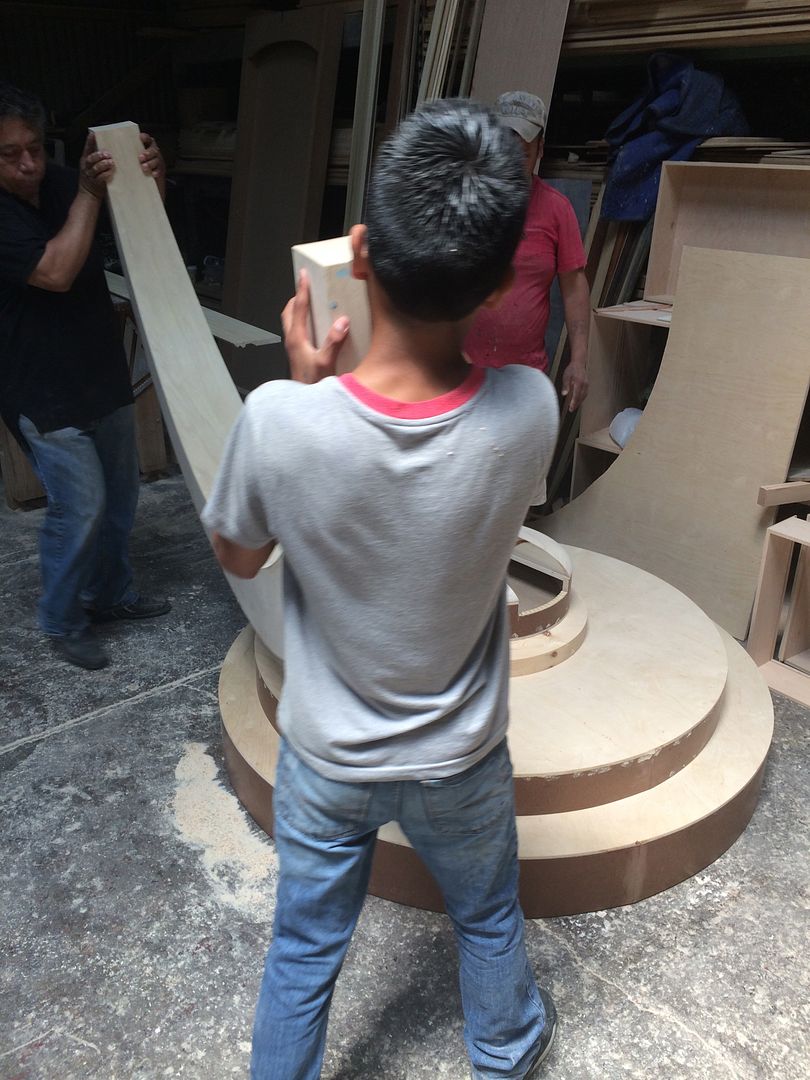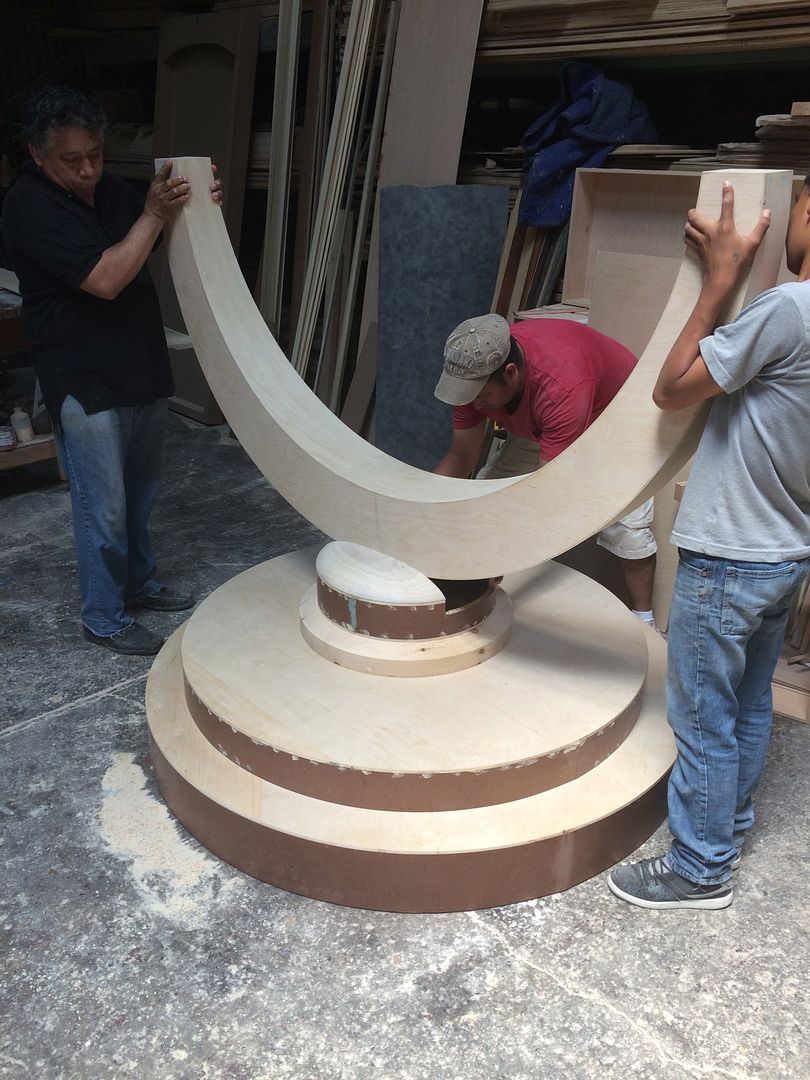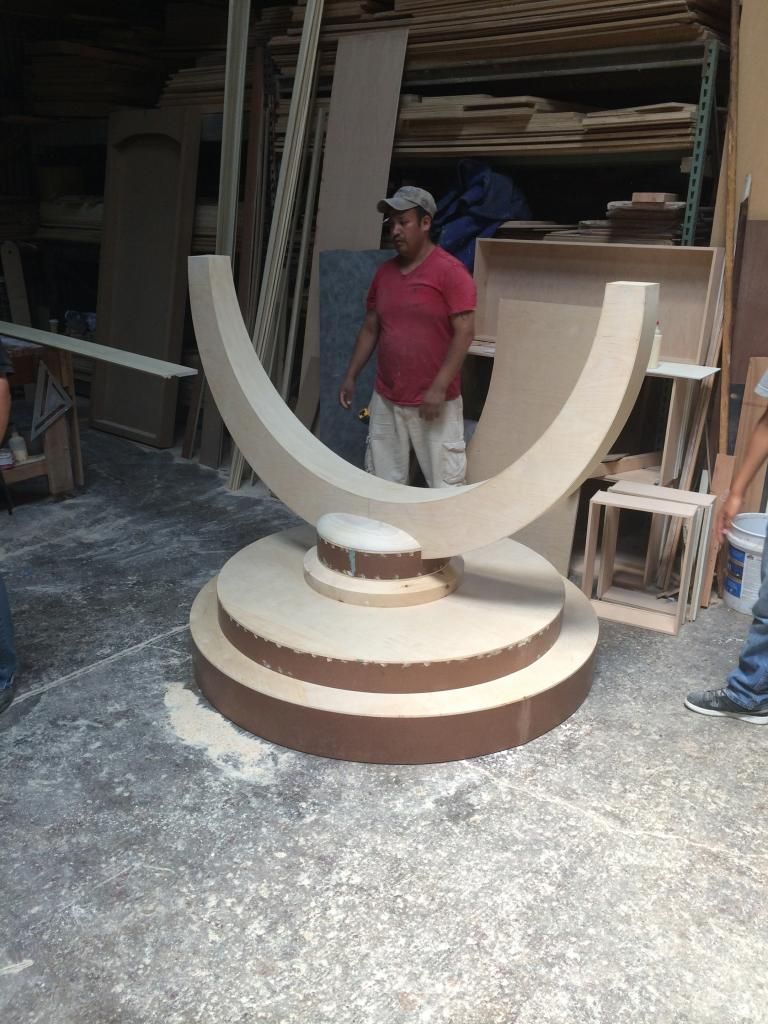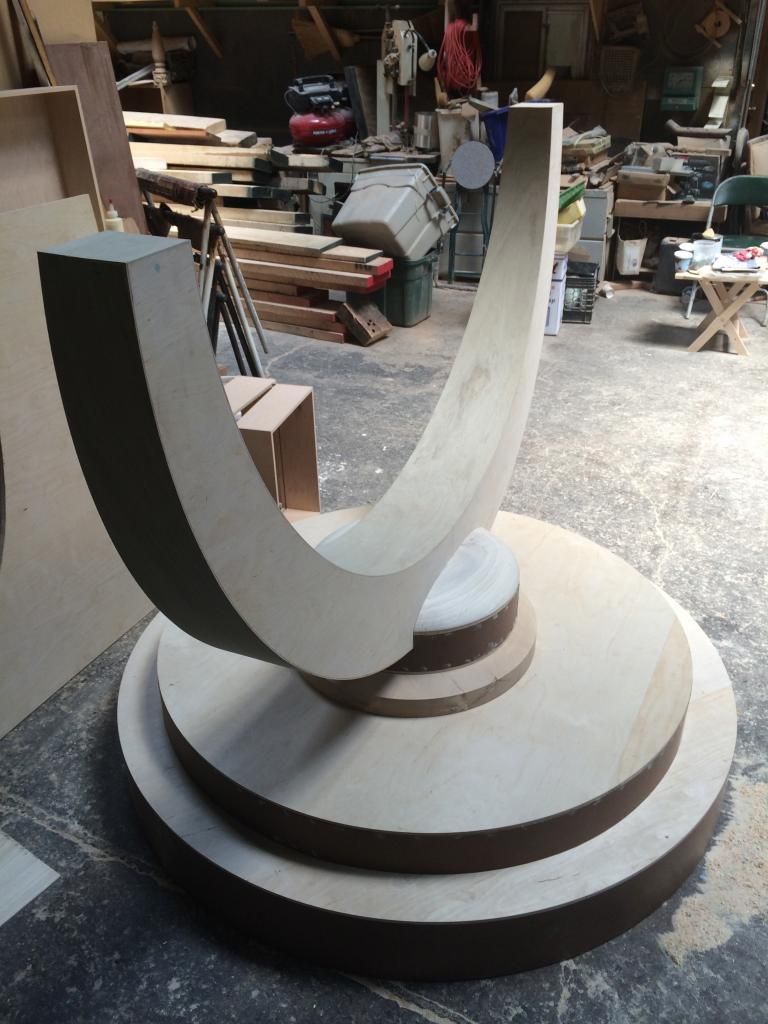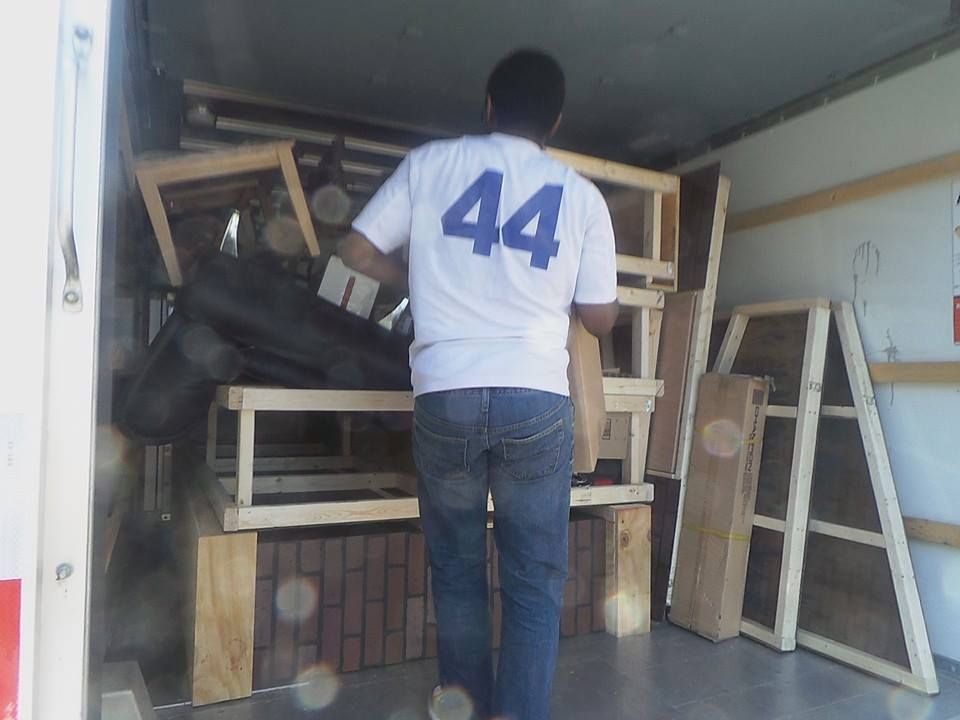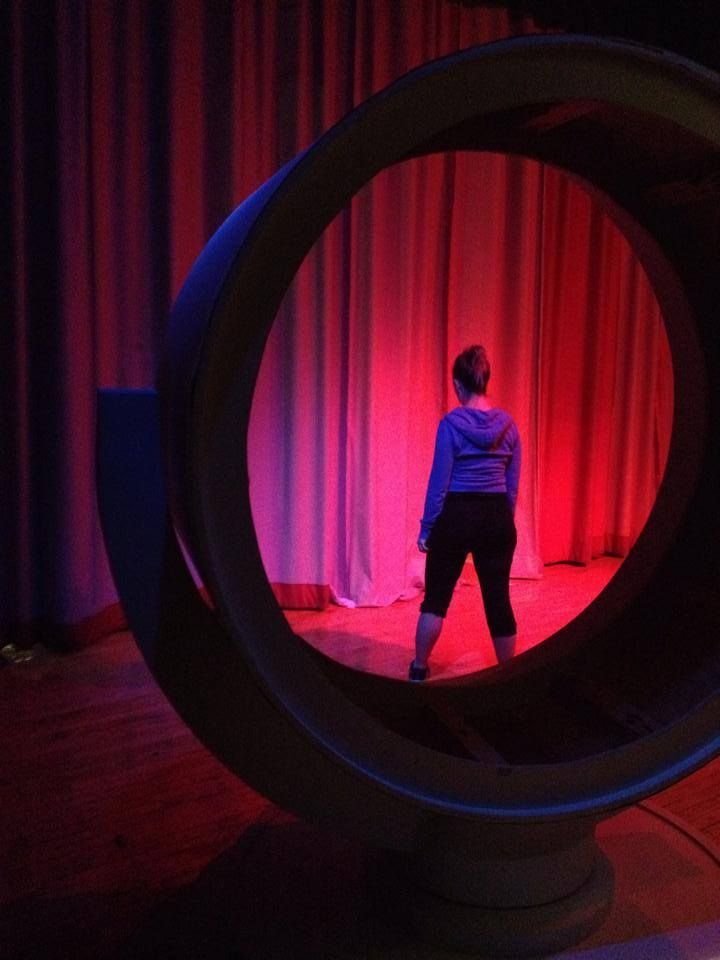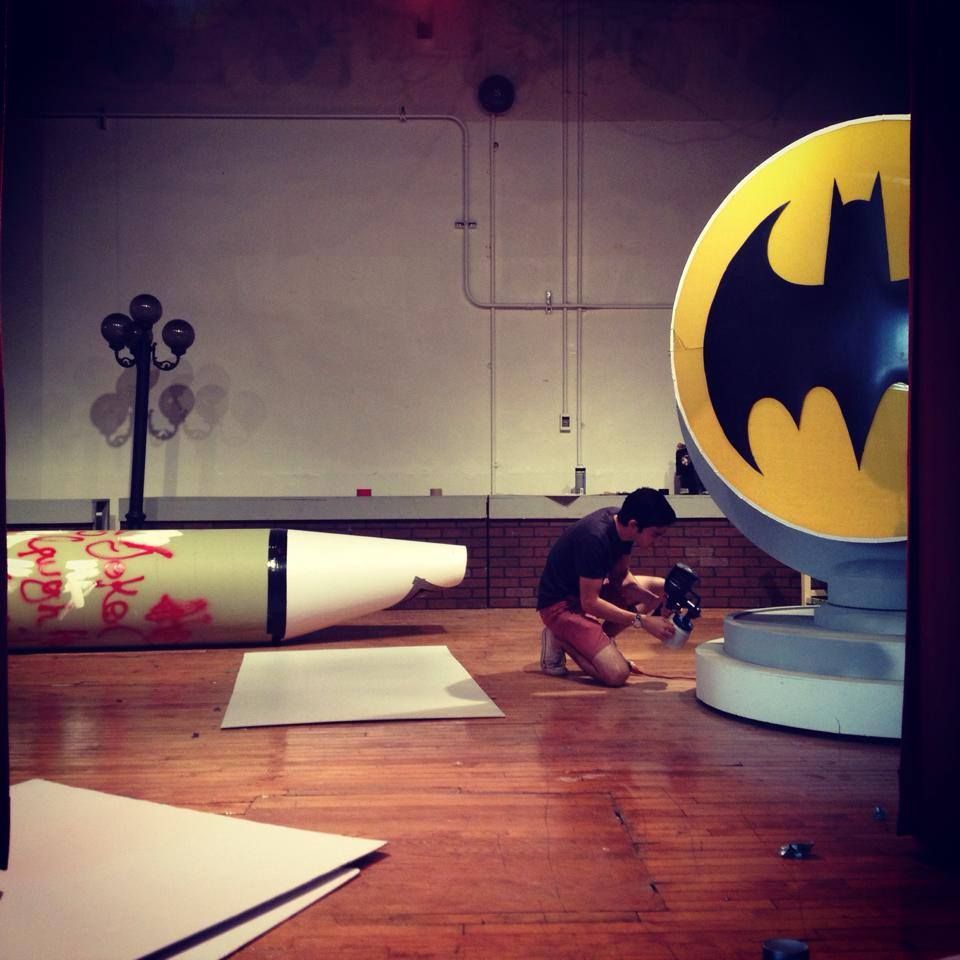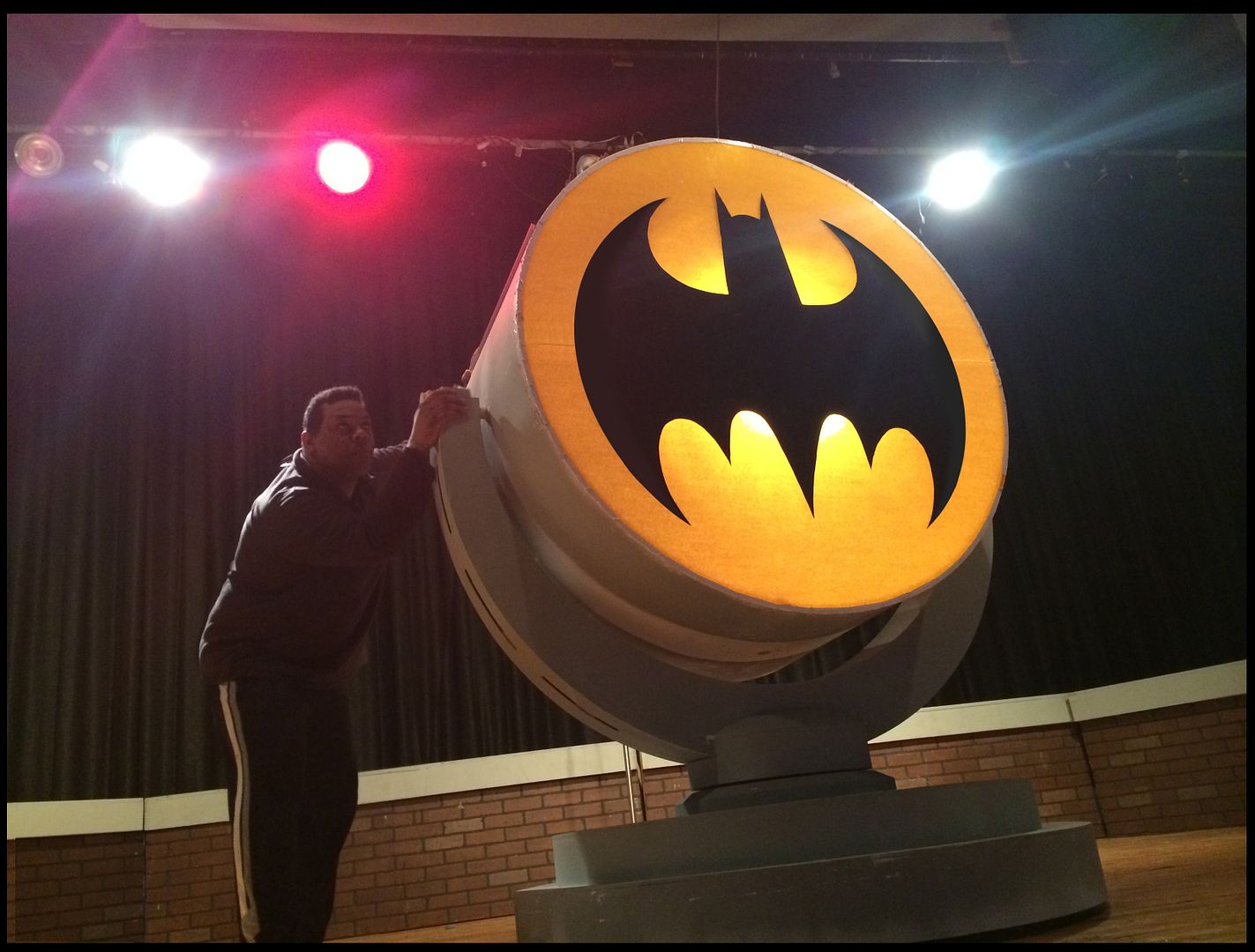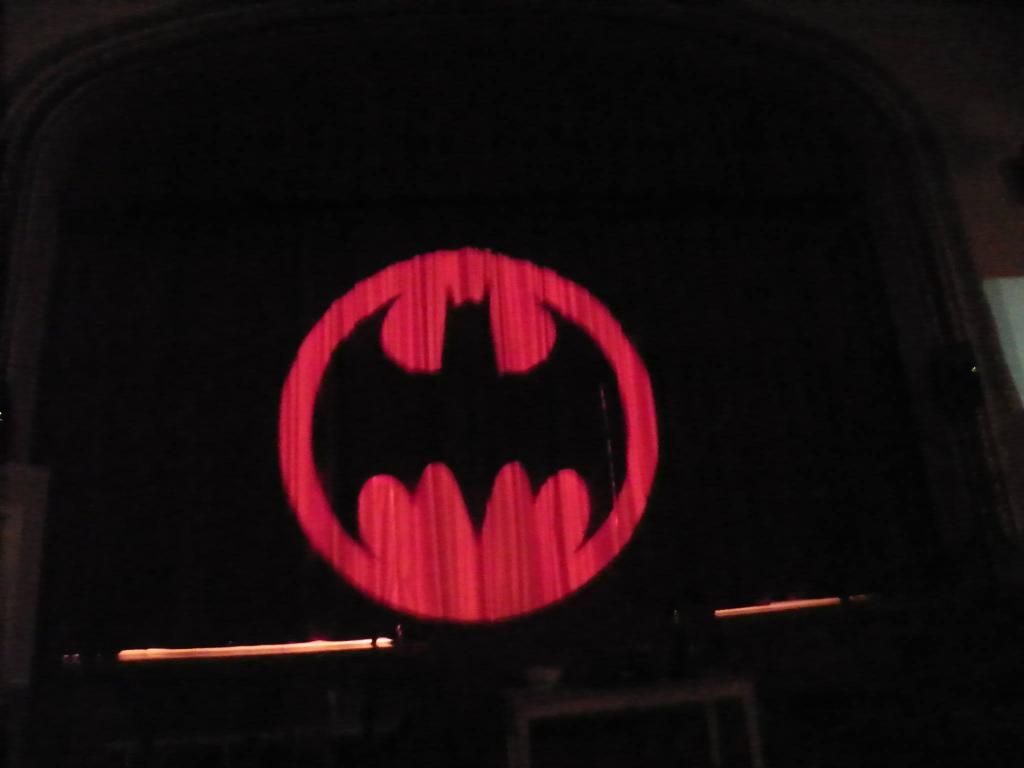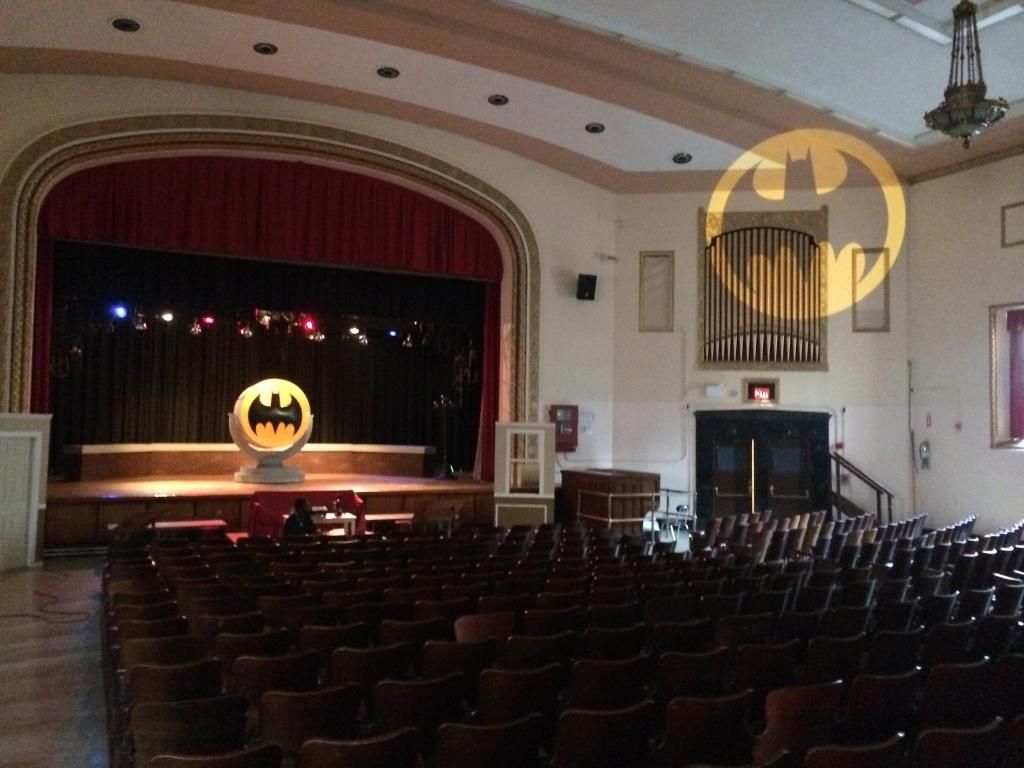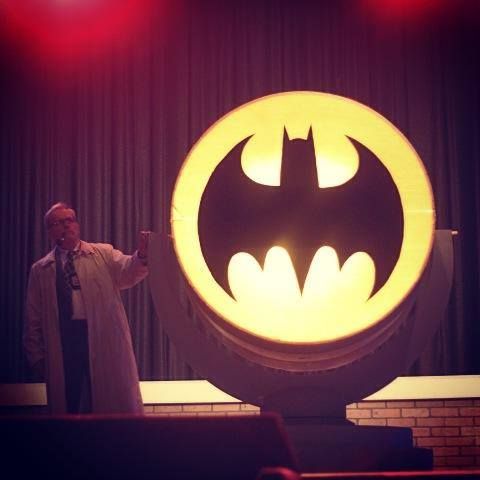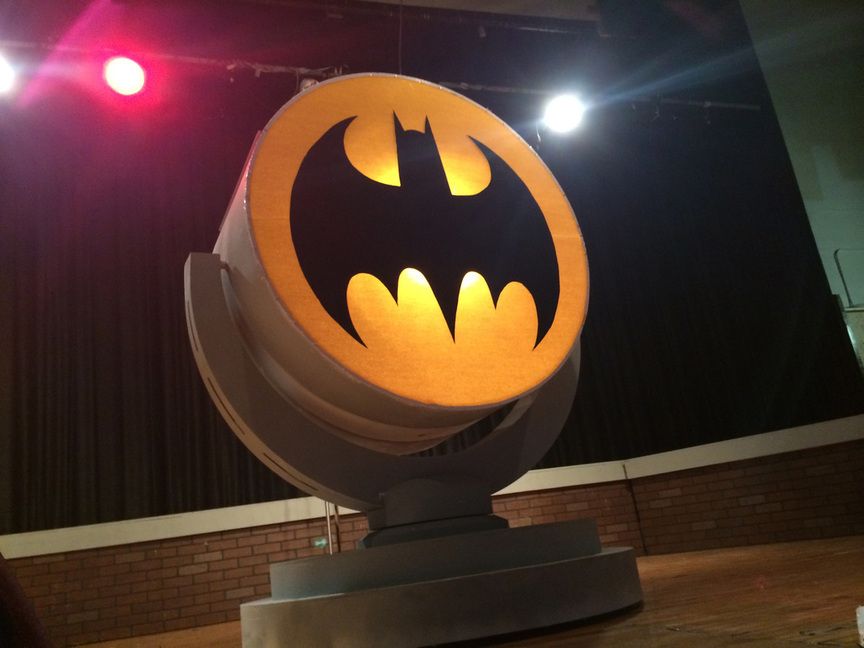The Bat Signal made regular appearances in the Batman’s big screen adventures. Unfortunately, there was not much reference information for me to work with.
SUCHAMCHER’S FOREVER SIGNAL: In the 1990’s, Joel Schumacher featured the Bat Signal in his two entries of the Batman film franchise, “Batman Forever” and “Batman & Robin”. While the prop seemed like it might actually be reasonably impressive in it’s scale, it was virtually impossible to make out any of its structural details since the photography was exposed only for the lit portion of the Signal, rendering the rest of it in almost complete darkness.
NOLAN’S SMALL SIGNAL ON THE BIG SCREEN
From 2005 – 2012 Director Chris Nolan presented his take on the Batman universe on the big screen. Virtually all aspects of the mythology were re-designed including the famous Bat Signal. The searchlight was presented as a much smaller and much more modern device than in previous films. Since I was planning to fabricate a classic, much larger design, this Bat-Signal was of no help.
As an “old timer” Batman fan, I nearly neglected video games during my research into designs for the Bat Signal. But it wasn’t long before I was introduced to the gaming world’s take on the prop.
ARKHAM KNIGHT ON Xbox:
Advance images of the upcoming video game
Arkham Knight” for Xbox featured some pretty good image reference for The Bat Signal prop. The design approach seemed somewhat “Steampunk” to me, which was an approach that I was not interested in exploring. However, the large circular base did seem like a logical approach that I might want to emulate.
A NEW HOPE: BURTON GOES GENERAL ELECTRIC
Ultimately, it was Tim Burton’s 1989 Batman film that provided the design inspiration for the Bat-Signal prop that I wanted to create for my play.
A similar prop also appeared briefly in Chris Nolan’s “Batman Begins” in 2005.
It seemed that I would be taking my cues from an old
army-surplus World War II, (General Electric or Sperry) anti-aircraft carbon arc search light. Unfortunately, neither film presented a clear enough view of the entire device (down to its base) in order to provide strong reference information.
A Google image search on these searchlights revealed them almost exclusively as portable hardware in military applications. These searchlights were always mounted onto the rolling chassis of a small jeep-like trailer with a large generator truck stationed nearby.
I found virtually no photo reference for these big lights mounted permanently to any kind of turntable (the configuration which I hoped to represent atop Gotham City Police Headquarters). Furthermore, some inquiries made to a searchlight scrapyard I located in Arizona revealed that these units (even independent of their generator trailers) weighed somewhere in the vicinity of 3 TONS.
This was not exactly suitable for a community stage, and further evidence that the Bat Signal in my production would have to be designed and fabricated by my team and I as a lightweight cosmetic prop. Creating this kind of searchlight configuration was going to require some artistic license.
I made one final online search in a last-ditch attempt to locate a facility that might offer a cosmetic lightweight prop that I could rent or purchase. No luck. And a search for any online articles or instructional youtube videos detailing the construction of a homemade Bat Signal yielded nothing useful for what I had in mind.
As an added challenge, the ehow.com website provided this infuriatingly definitive (and discouraging) statement:
But anyone that knows me knows that I DO love a good challenge… or in this case, a DARE! Time to get started!
DRAWINGS, AND DEADLINES, AND POOLS, OH MY!”
Using the DC Direct Bat Signal toy prop as a reference model, I established a very rudimentary working drawing of the searchlight’s range of articulation. This was based off of the prop’s intended range of motion as it would be seen on stage.
My earliest approach to the fabrication of the Bat Signal prop was to design a device that was based off of readily-available inexpensive shapes. This “kit-Bashing” technique is typically employed as a cost and time saving measure when fabricating unusual shapes. It occurred to me that a
Children’s wadding pool (employed vertically) might be a good starting point for the searchlight’s main reflector (as seen here in my earliest production hand sketches immediately following my decision to move forward with the play). An online search yielded nothing in an appropriate size… nor price range that would be suitable for these designs.
During the earliest days of my designing of this production, my original plans shied away from rendering the Bat Signal as an accurately-sized prop, and instead opted to suggest a considerably smaller device that would stand (a more manageable) 6 feet in height.
However, after I became more familiar with the specific design aspects of vintage anti-aircraft searchlights, my sketches gradually became more accurate in terms of the prop’s general shape and size. That desire for accuracy led me to the realization that much of the Bat Signal main components would have to be designed and built from scratch.



